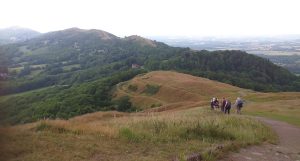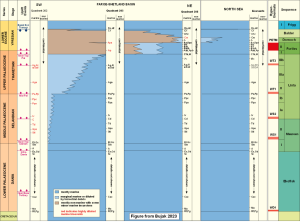If you had to give one piece of advice to a reservoir engineer about reservoir simulation, what would it be?
Merlin’s answer would be good communication and teamwork.
To facilitate that communication in house, Ben Adillah provided a lunch and learn session to the geoscience staff all about reservoir simulation. No lunch and learn is complete without a spot of food and Ben very kindly bought homemade Malaysian dishes, Pogodil (Malaysian spring rolls) and Seri Muka (a two layered sweet dessert made with rice, coconut milk and pandan leaf custard) which were thoroughly enjoyed by all.

So why communication?
Reservoir simulation brings together interpretations from a wide range of geoscience specialisms and simulates the dynamic flow of fluid through that interpretation. The aim is to get a geologically sound model that fits the real test and production history of the field. However, quite often the simulated dynamic flow does not match the field history on the first attempt. The reason? The geological model is just one interpretation.
As geoscientists, it is not possible to physically study the rocks we are modelling deep beneath the surface, rather we have isolated data points within the whole. Essentially, we are putting together a puzzle which has many missing pieces and filling in the blanks to the best of our scientific ability. When the model is made, the simulation is run and the results analysed. The reservoir engineer can then go back to the geoscientist and provide valuable insights on which aspects of the model need updating. For example, a model needing large changes in permeability is going to be different to one requiring more detailed compartmentalisation. The process continues iteratively between the geoscientist and engineers until a model is built that matches the field history.
“I will never forget my first geological modelling project. It was on the tight Rotliegend of the Southern North Sea. Having spent quite some time understanding the tight nature of the reservoir, the reservoir properties were included into the model, and it was passed onto the reservoir engineer. When the dynamic simulation was run, the flow into the wells couldn’t be matched with the low permeabilities modelled. The permeability needed increasing. A visit to the core store and a few days core logging later, it was identified that the dune slip slopes were providing higher permeability pathways within the dune sand deposits. Permeability was remodelled taking this into account and the dynamic simulation became a much better match to the history of the field.” Helen Bone

So, good communication between team members is our key take away to achieve a robust and geologically viable reservoir simulation. What is yours?


